Cover������������
Copyright����������������
Title Page�����������������
Table of Contents
Foreword
Preface
Acknowledgments
PART I: Getting Started
Chapter 1 Introduction to Software Engineering
1.1 Introduction: Software Engineering Failures
1.2 What Is Software Engineering?
1.3 Software Engineering Concepts
1.4 Software Engineering Development Activities
1.5 Managing Software Development
1.6 ARENA Case Study
1.7 Further Reading
1.8 Exercises
Chapter 2 Modeling with UML
2.1 Introduction
2.2 An Overview of UML
2.3 Modeling Concepts
2.4 A Deeper View into UML
2.5 Further Readings
2.6 Exercises
Chapter 3 Project Organization and Communication
3.1 Introduction: A Rocket Example
3.2 An Overview of Projects
3.3 Project Organization Concepts
3.4 Project Communication Concepts
3.5 Organizational Activities
3.6 Further Readings
3.7 Exercises
PART II: Dealing with Complexity
Chapter 4 Requirements Elicitation
4.1 Introduction: Usability Examples
4.2 An Overview of Requirements Elicitation
4.3 Requirements Elicitation Concepts
4.4 Requirements Elicitation Activities
4.5 Managing Requirements Elicitation
4.6 ARENA Case Study
4.7 Further Readings
4.8 Exercises
Chapter 5 Analysis
5.1 Introduction: An Optical Illusion
5.2 An Overview of Analysis
5.3 Analysis Concepts
5.4 Analysis Activities: From Use Cases to Objects
5.5 Managing Analysis
5.6 ARENA Case Study
5.7 Further Readings
5.8 Exercises
Chapter 6 System Design: Decomposing the System
6.1 Introduction: A Floor Plan Example
6.2 An Overview of System Design
6.3 System Design Concepts
6.4 System Design Activities: From Objects to Subsystems
6.5 Further Readings
6.6 Exercises
Chapter 7 System Design: Addressing Design Goals
7.1 Introduction: A Redundancy Example
7.2 An Overview of System Design Activities
7.3 Concepts: UML Deployment Diagrams
7.4 System Design Activities: Addressing Design Goals
7.5 Managing System Design
7.6 ARENA Case Study
7.7 Further Readings
7.8 Exercises
Chapter 8 Object Design: Reusing Pattern Solutions
8.1 Introduction: Bloopers
8.2 An Overview of Object Design
8.3 Reuse Concepts: Solution Objects, Inheritance, and Design Patterns
8.4 Reuse Activities: Selecting Design Patterns and Components
8.5 Managing Reuse
8.6 ARENA Case Study
8.7 Further Readings
8.8 Exercises
Chapter 9 Object Design: Specifying Interfaces
9.1 Introduction: A Railroad Example
9.2 An Overview of Interface Specification
9.3 Interface Specification Concepts
9.4 Interface Specification Activities
9.5 Managing Object Design
9.6 ARENA Case Study
9.7 Further Readings
9.8 Exercises
Chapter 10 Mapping Models to Code
10.1 Introduction: A Book Example
10.2 An Overview of Mapping
10.3 Mapping Concepts
10.4 Mapping Activities
10.5 Managing Implementation
10.6 ARENA Case Study
10.7 Further Readings
10.8 Exercises
Chapter 11 Testing
11.1 Introduction: Testing The Space Shuttle
11.2 An Overview of Testing
11.3 Testing Concepts
11.4 Testing Activities
11.5 Managing Testing
11.6 Further Readings
11.7 Exercises
PART III: Managing Change
Chapter 12 Rationale Management
12.1 Introduction: Slicing Ham
12.2 An Overview of Rationale
12.3 Rationale Concepts
12.4 Rationale Activities: From Issues to Decisions
12.5 Managing Rationale
12.6 Further Readings
12.7 Exercises
Chapter 13 Configuration Management
13.1 Introduction: An Aircraft Example
13.2 An Overview of Configuration Management
13.3 Configuration Management Concepts
13.4 Configuration Management Activities
13.5 Managing Configuration Management
13.6 Further Readings
13.7 Exercises
Chapter 14 Project Management
14.1 Introduction: The STS-51L Launch Decision
14.2 An Overview of Project Management
14.3 Project Management Concepts
14.4 Classical Project Management Activities
14.5 Agile Project Management Activities
14.6 Further Readings
14.7 Exercises
Chapter 15 Software Life Cycle
15.1 Introduction: Polynesian Navigation
15.2 IEEE 1074: Standard for Developing Life Cycle Processes
15.3 Characterizing the Maturity of Software Life Cycle Models
15.4 Life Cycle Models
15.5 Further Readings
15.6 Exercises
Chapter 16 Methodologies: Putting It All Together
16.1 Introduction: The First Ascent of K2
16.2 Project Environment
16.3 Methodology Issues
16.4 A Spectrum of Methodologies
16.5 Case Studies
16.6 Further Readings
16.7 Exercises
PART IV: Appendices
Appendix A: Design Patterns
A.1 Abstract Factory: Encapsulating Platforms
A.2 Adapter: Wrapping Around Legacy Code
A.3 Bridge: Allowing for Alternate Implementations
A.4 Command: Encapsulating Control Flow
A.5 Composite: Representing Recursive Hierarchies
A.6 Facade: Encapsulating Subsystems
A.7 Observer: Decoupling Entities from Views
A.8 Proxy: Encapsulating Expensive Objects
A.9 Strategy: Encapsulating Algorithms
A.10 Heuristics for Selecting Design Patterns
Appendix B: Glossary
A
B
C
D
E
F
G
H
I
J
K
L
M
N
O
P
Q
R
S
T
U
V
W
X
Appendix C: Bibliography
Index
A
B
C
D
E
F
G
H
I
J
K
L
M
N
O
P
Q
R
S
T
U
V
W
X
Y
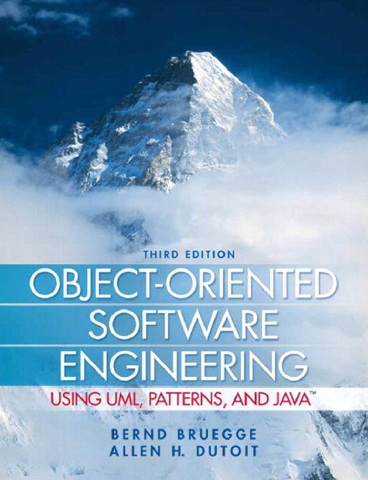
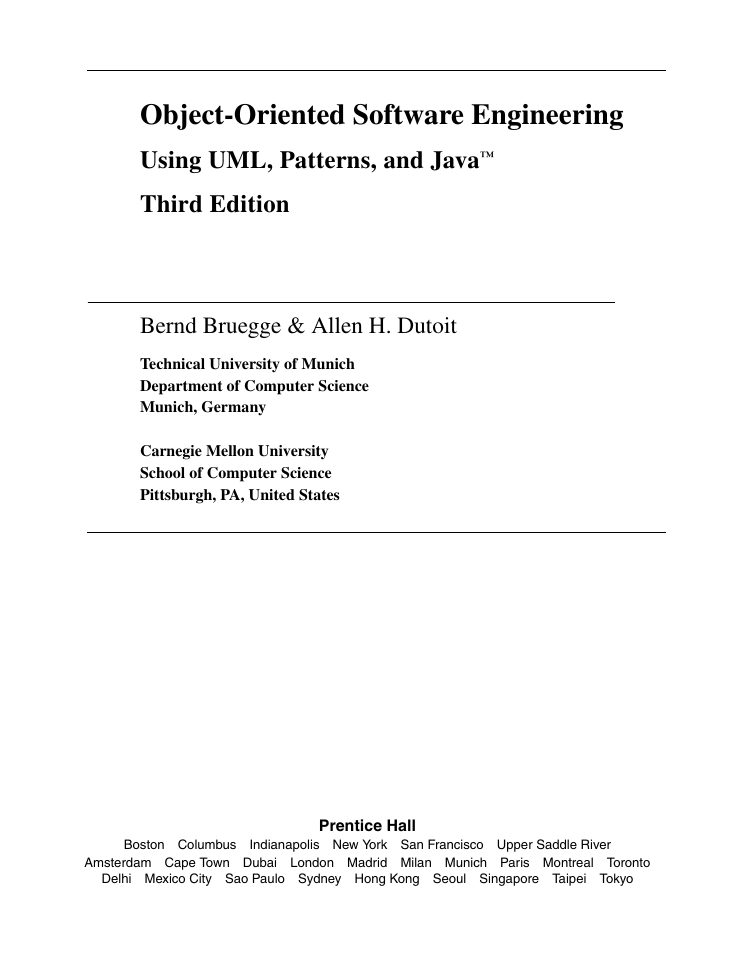

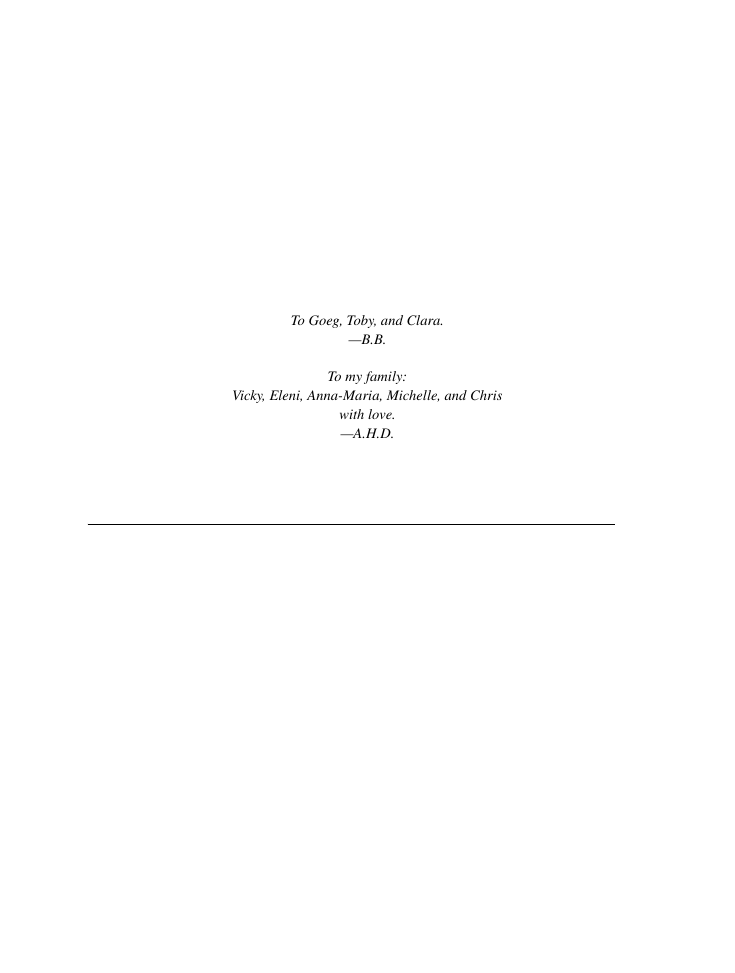
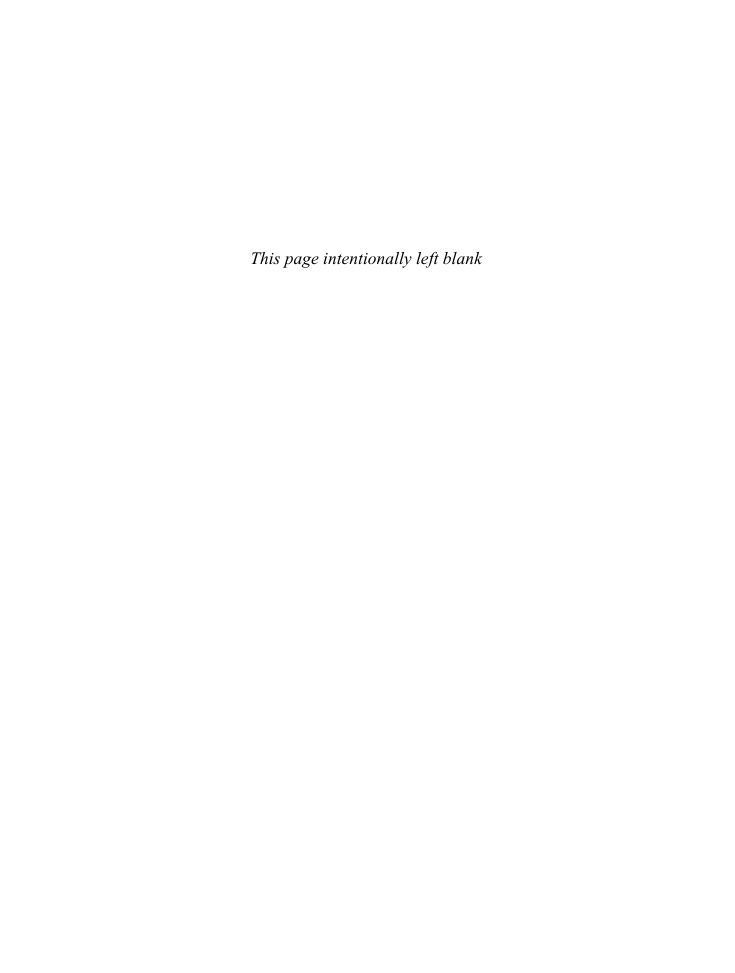
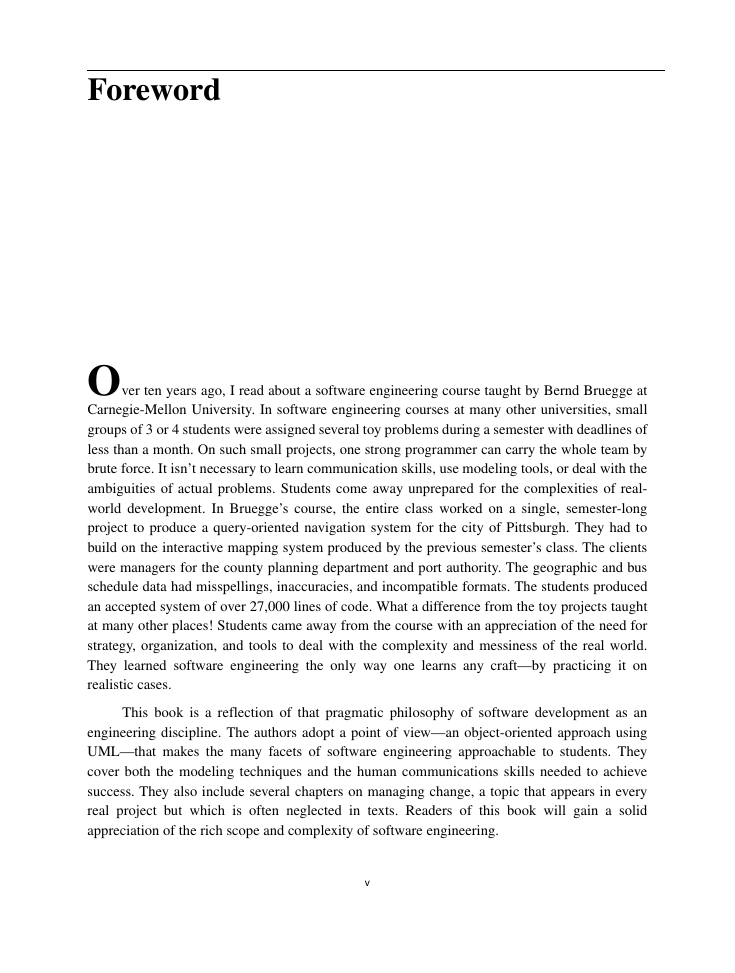
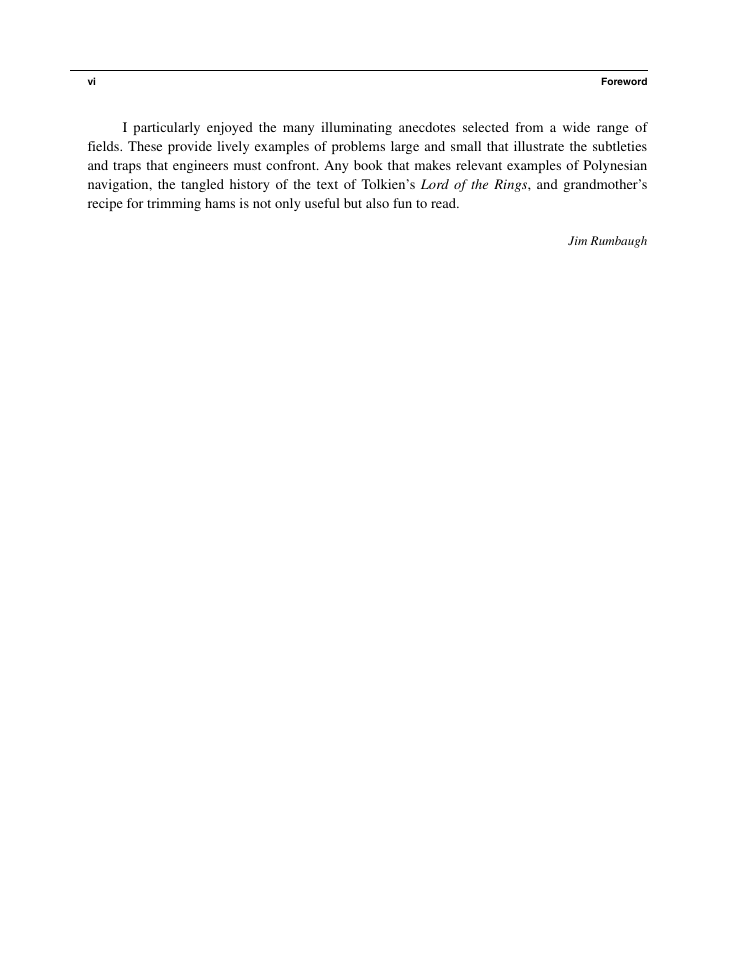
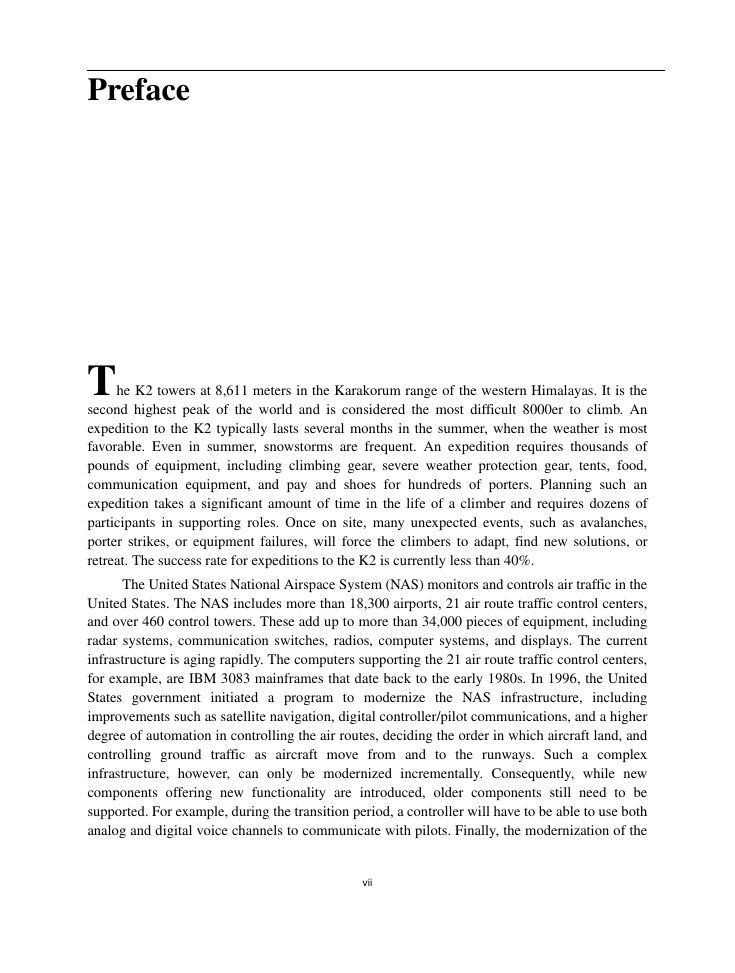








 2023年江西萍乡中考道德与法治真题及答案.doc
2023年江西萍乡中考道德与法治真题及答案.doc 2012年重庆南川中考生物真题及答案.doc
2012年重庆南川中考生物真题及答案.doc 2013年江西师范大学地理学综合及文艺理论基础考研真题.doc
2013年江西师范大学地理学综合及文艺理论基础考研真题.doc 2020年四川甘孜小升初语文真题及答案I卷.doc
2020年四川甘孜小升初语文真题及答案I卷.doc 2020年注册岩土工程师专业基础考试真题及答案.doc
2020年注册岩土工程师专业基础考试真题及答案.doc 2023-2024学年福建省厦门市九年级上学期数学月考试题及答案.doc
2023-2024学年福建省厦门市九年级上学期数学月考试题及答案.doc 2021-2022学年辽宁省沈阳市大东区九年级上学期语文期末试题及答案.doc
2021-2022学年辽宁省沈阳市大东区九年级上学期语文期末试题及答案.doc 2022-2023学年北京东城区初三第一学期物理期末试卷及答案.doc
2022-2023学年北京东城区初三第一学期物理期末试卷及答案.doc 2018上半年江西教师资格初中地理学科知识与教学能力真题及答案.doc
2018上半年江西教师资格初中地理学科知识与教学能力真题及答案.doc 2012年河北国家公务员申论考试真题及答案-省级.doc
2012年河北国家公务员申论考试真题及答案-省级.doc 2020-2021学年江苏省扬州市江都区邵樊片九年级上学期数学第一次质量检测试题及答案.doc
2020-2021学年江苏省扬州市江都区邵樊片九年级上学期数学第一次质量检测试题及答案.doc 2022下半年黑龙江教师资格证中学综合素质真题及答案.doc
2022下半年黑龙江教师资格证中学综合素质真题及答案.doc